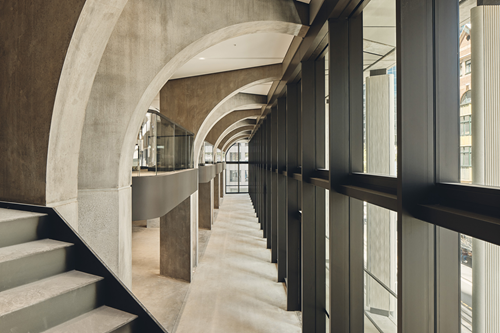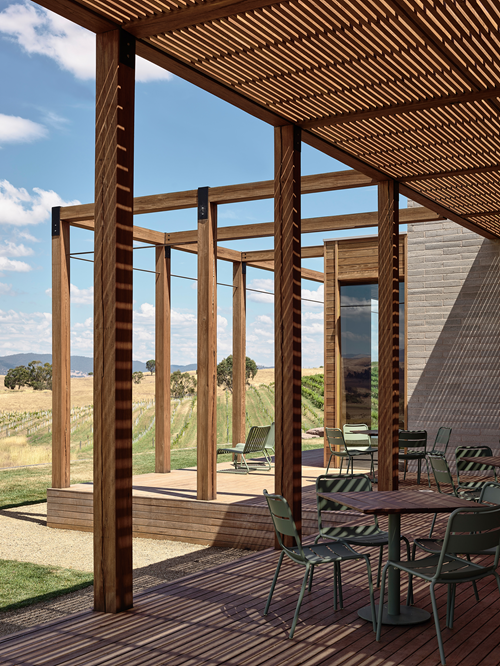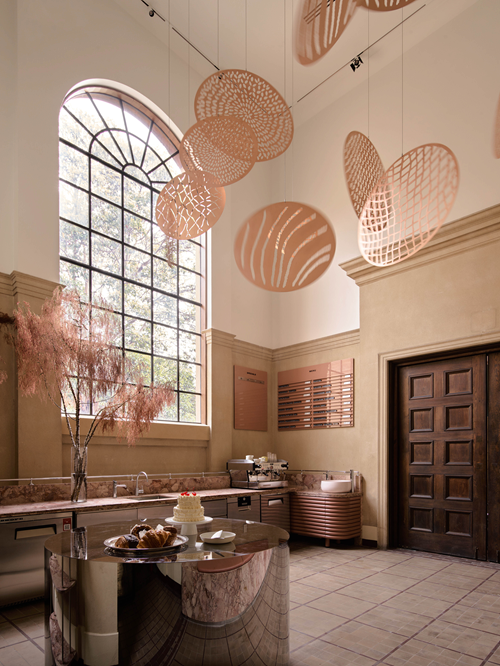A cellar door, a warehouse-turned-design studio, a soaring office tower and a 19th century-style building may all be wildly different structures. But together they form this year’s finest examples of commercial architecture after all four received highest honours at the 2023 Australian National Architecture Awards.
The annual national awards are a reminder that the definition of a successful commercial asset is multi-faceted: Andrew Cortese, managing partner at Grimshaw Architects Sydney said the Poly Centre at 210 George Street in the city’s CBD which won the Australian Institute of Architects (AIA) National Commendation for Commercial Architecture category was a good example. “Today Sydney is uniquely placed to attract and retain 21st century talent,” Mr Cortese said. “But its transformation into a truly global capital can only be realised with the creation of workplaces that imbue the city with life and vitality.”
Happy on the inside
Poly Centre was just the ticket, Mr Cortese said, pointing to the “truly leading-edge” workplace’s many features that were included with the aim of uplifting and heightening the mood of those inside. The building allowed tenants to work with premium amenity as well as a strong sense of community. “Grimshaw’s Poly Centre is designed to maximise daylight, enable greater connectivity within and enhance enjoyment of public realm beyond,” he said. “We devised a system of elegantly elongated concrete arcs that are expressed at street level and repeated across each double-height floor plate to create mezzanines throughout the build.”
As sophisticated as the structure was, its impact on occupants remained relaxed Mr Cortese said. “For all this formal modelling, the tower has a sensuous feeling to it. Materials vary in texture and tonality, light falls across its curves beautifully… illuminating the village-like movement within.” Other clever features that attracted the judges’ attention were the building’s vertical blades on the western side that allow for street views but still shade the interior.

A taste of excellence
Victorian architect Lucy Clemenger and the team at her eponymous firm received the prestigious Harry Seidler Award for Commercial Architecture for their Delatite Cellar Door. Described as a labour of love for the firm, the modern structure in Victoria’s High Country was recognised for being more than a place to taste wine but also a gleaming example of eco-friendly design due to the structure blending so easily and harmoniously with the alpine backdrop.
Prior to its transformation the1980s-built cellar door was a stock-standard affair. But the potential to reimagine the building with architectural finesse and create something special was clear, the property located in prime position on a ridgeline affording sweeping views of Mount Buller and surrounding ranges with plenty of room to expand. The result was a serious of interconnected pavilions connected with large terraces and courtyards, so visitors would not be shut away from the great outdoors while enjoying the winery’s produce. Horizontal timber cladding was included as a nod to the way in which local cattlemen’s huts were constructed.

Warehouse wisdom
The National Award for Commercial Architecture went to another Victorian firm, Jackson Clements Burrows Architects, for their new headquarters JCB Studio. The adaptive re-use project involved the conceptualisation and installation of contemporary additions to an existing mid-century industrial warehouse in Swan Street, Richmond. The team decided to adopt a “reuse and salvage” approach to the interior design given the understanding that the building would one day likely be demolished for redevelopment.
Like Sydney’s Poly Centre, a primary aim was to create an attractive, flexible, highly adaptable and collaborative space that inspired creativity. “Our ethos is captured in a playful and pragmatic design response that’s welcoming and warm, with a creative hum,” JCB said in its submission.

Heritage with heart
The beautiful 1920s Beaux Arts style 1920s building at 262 Liverpool Street Darlinghurst in Sydney took out the AIA’s second National Commendation for Commercial Architecture award. Now known as Yirranma Place, the building was reimagined by SJB Architects as one that would be complementary to the work of charitable organisations. Beautiful spaces now sit within the existing shell and the new additions are “sculptural, robust and respectful of the heritage fabric”. The interior was opened up so light could penetrate the depths of the historic structure. It is now home to the headquarters of the Paul Ramsay Foundation, legacy of the Ramsay Health founder and benefactor to charity.
